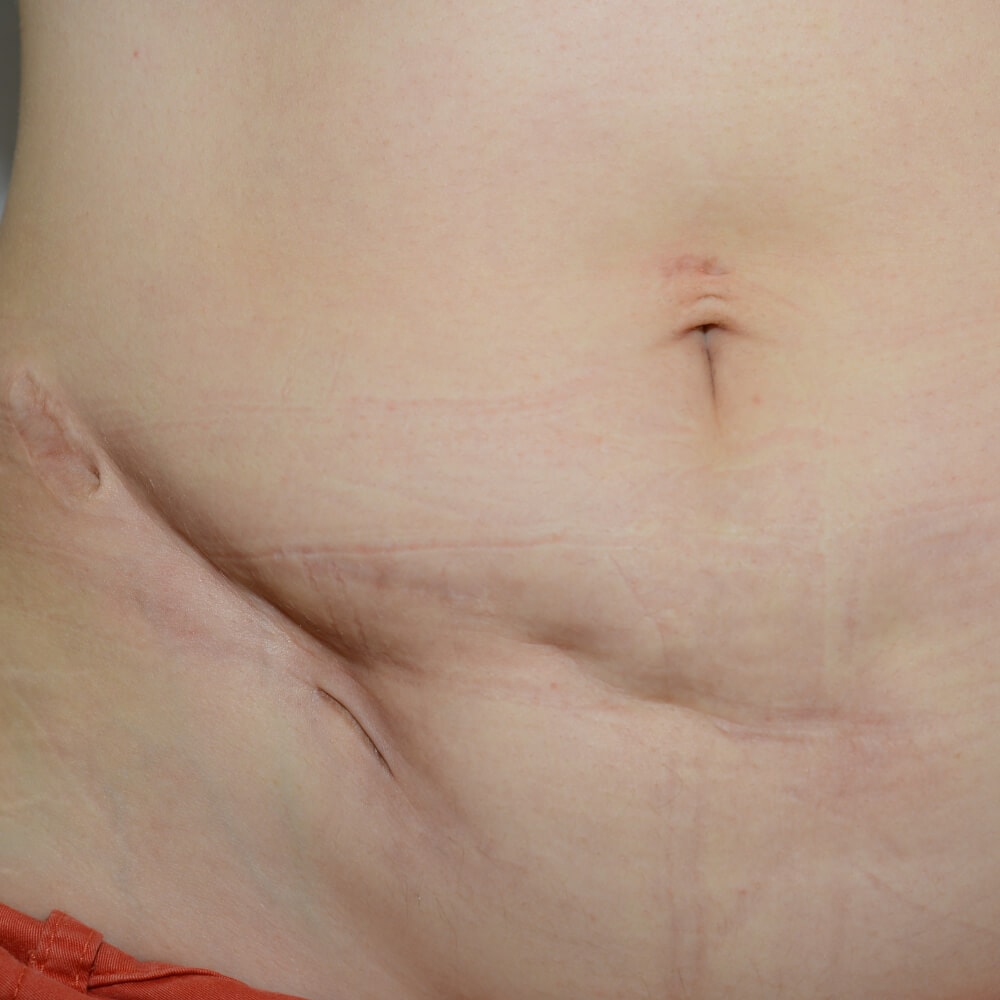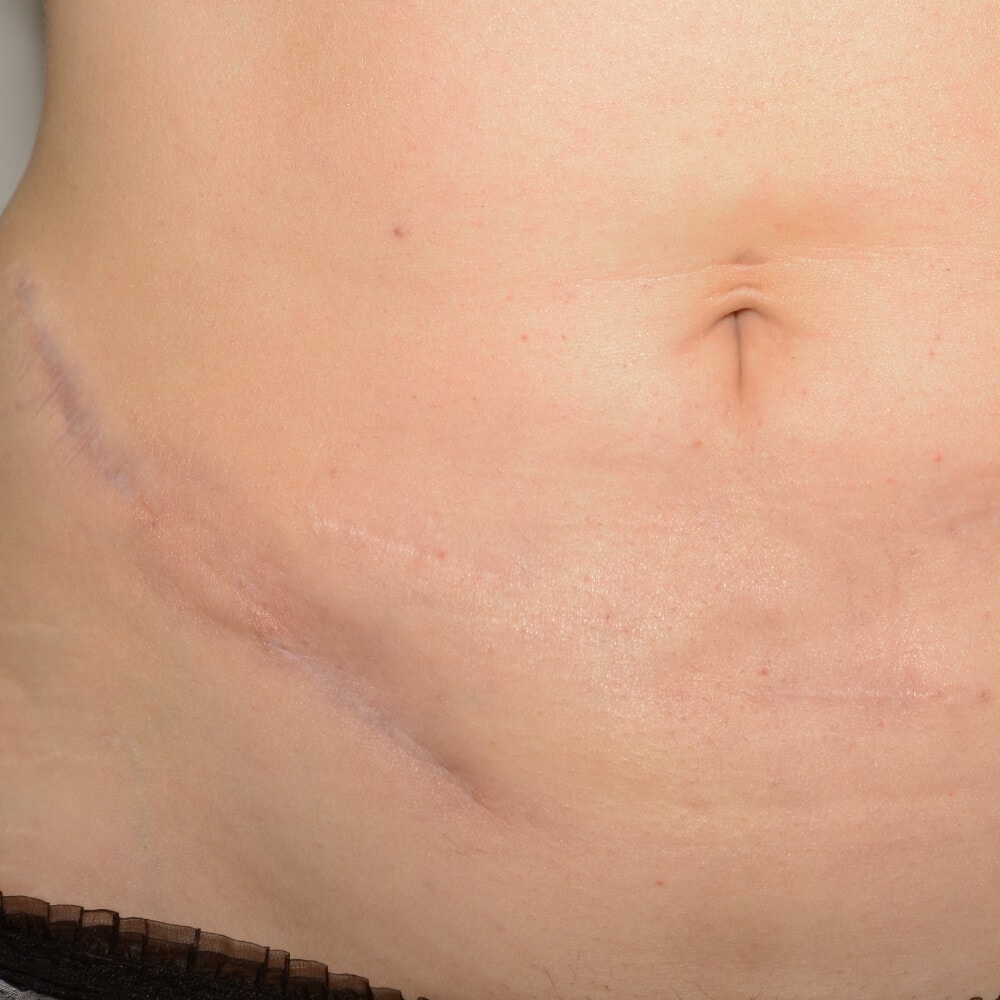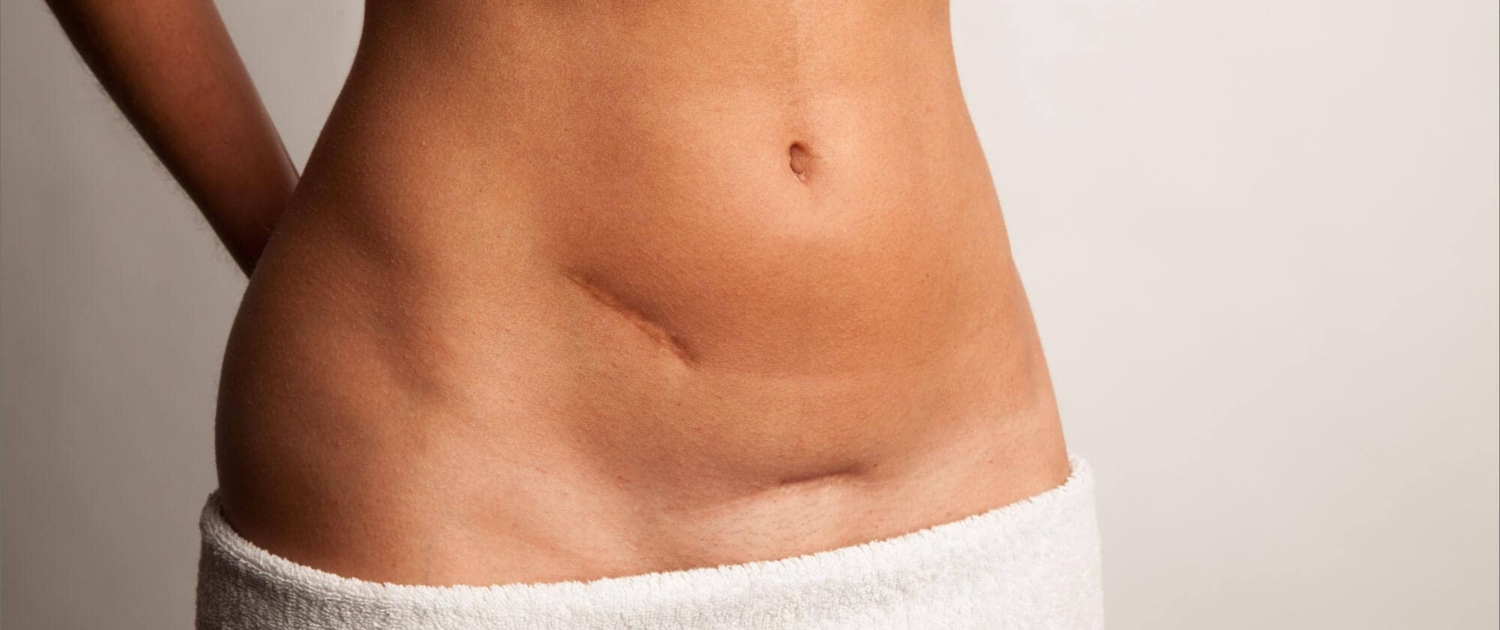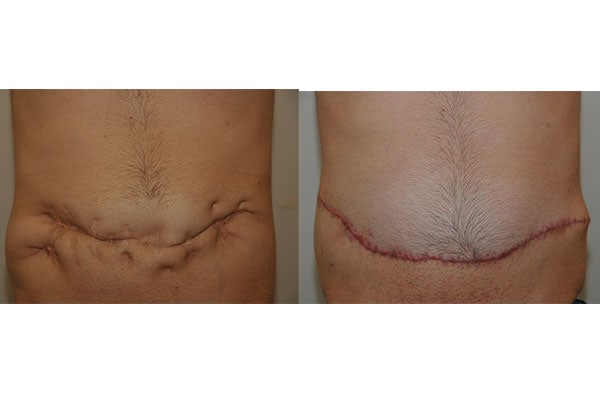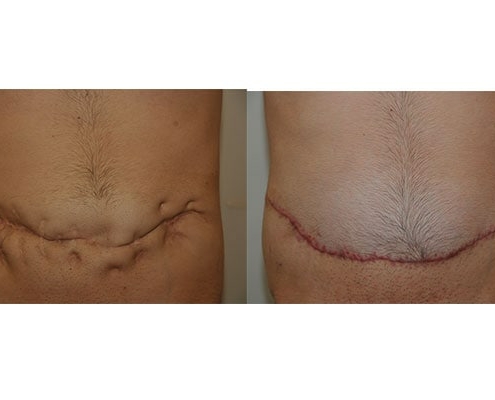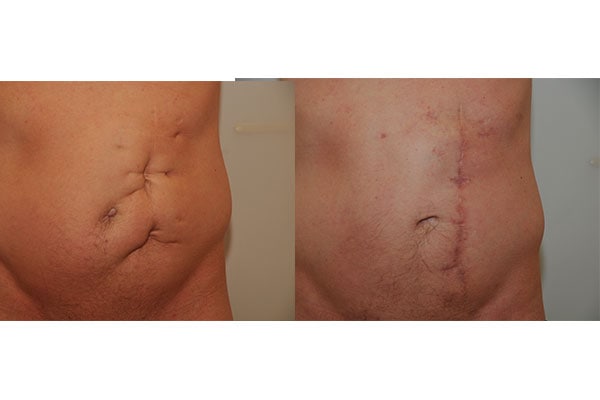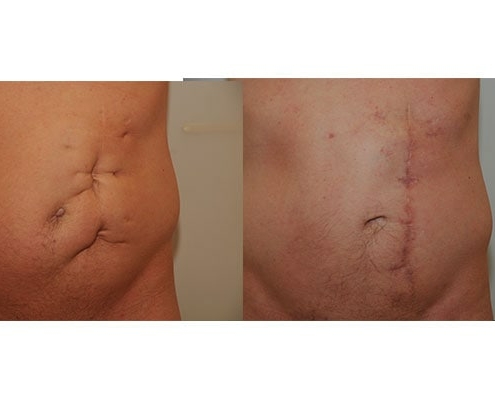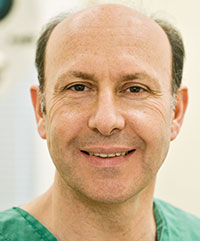1. Which “scar types” are there?
We distinguish between scars after mechanical injury, burns or after surgery. Injury scars may be very varied, burn scars are usually rather large and surgical scars are mostly straight.
2. Why are scars bothersome?
Scars are seen mostly as a nuisance when they are visible (face, décolleté, extremities). The appearance of the scar also plays a role – is it thickened, sunken or broad; is it more disturbing than a delicate, pale and even level horizontal scar. If the scar is in a particularly unfortunate spot, for example longitudinally over a joint, it thickens over time and causes a restriction of movement (string formation). Scar tissue is very dense and inelastic, so burn scars are particularly annoying when they are located on moving body parts.
3. What possibilities are there for scar correction?
There are conservative and surgical methods for scar correction. Conservative methods such as laser treatments or tattoos are no surgical interventions and only try to improve the visual appearance of the scar. Laser treatment can change the consistency and color of a scar, tattoos can match the color of the scar to the skin complexion, rendering it virtually invisible. Of course the possibilities of conservative therapies are clearly restricted. The surgical methods provide more complete correction options, ranging from simple excision (removal of the scar) to more complex flaps, if the scar is important.
4. Can an operation make a scar completely unrecognizable?
No, unfortunately not. One can only try to make the scar as inconspicuous as possible.
5. Is there a predisposition to the formation of unsightly scars?
Some people tend to form bead-shaped scars (hypertrophic scars, Keloids), in others wounds heal and form expanding sunken scars. Depending on genetic predisposition, the area of the wound may heal with excessive connective tissue or the opposite, so that the wound edges diverge. These individual types of wound healing can not be medically influenced, but there are preventive measures like silicone patches.
6. Does the age of the scar play a role?
Generally surgical wounds heal more inconspicuously and more tenderly with age. This is connected with the reduced and slowed down cell division with age.
7. What must be considered in cosmetic operations, in order to obtain as beautiful and inconspicuous a scar as possible?
The priority is a wound closure as tensionless as possible. With some operations a tension-free wound closure is impossible, so that gentle healing of the scars is rare. Examples would be most lifting procedures (abdominal skin, thigh, buttocks) and breast surgery (reduction, lift). Here, after one year there is almost always a scar correction necessary.
8. When can scars be corrected?
Scar corrections should not be carried before a year. The appearance of a scar may change over a long period; it is called “fresh” and “mature” scars. The older the scar, the greater the likelihood of a successful correction.
9. What are the results?
Depending on location, size & type of scar, the potential magnitude of improvement varies considerably. Smaller scars on the face or operational scars can usually be improved. The biggest challenge, however, are burn scars because they are usually very large. In general, the results of a scar correction are quite satisfactory.
10. Is scar revision performed under local or general anesthesia?
In the overwhelming number of cases, scar correction can be performed under local anesthesia. Complex procedures however will need a general anesthesia.
11. What complications can occur?
The possible risks of scar correction are similar to those of most smaller aesthetic surgeries. One differentiates complications concerned between medical interventions and the aesthetic result. Among the medical risks are infection and bleeding, but both are extremely rare with correct performance. Aesthetic complications concern unsatisfactory results, such as the scar isn’t smaller and less conspicuous afterwards.
